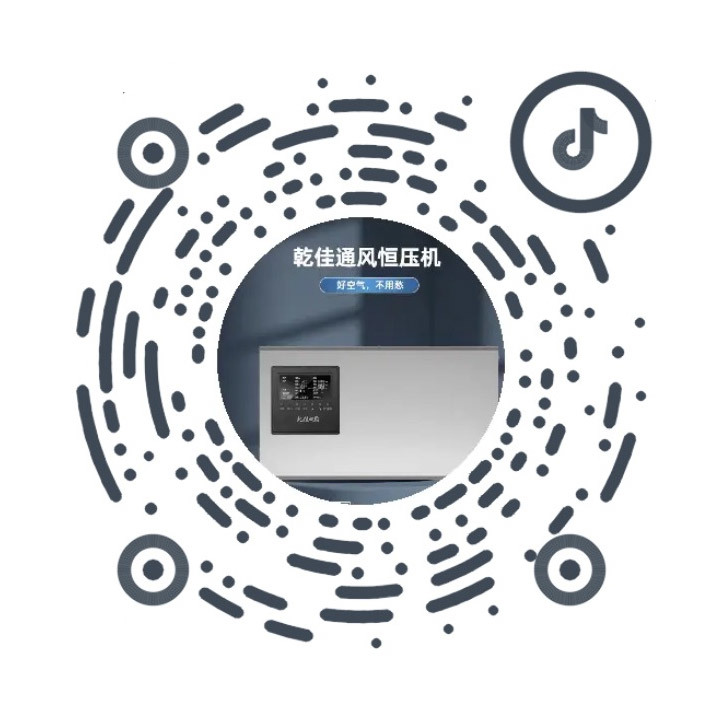Health hazards of negative pressure in enclosed spaces
Release time:
2022-04-08
Sewer Odor Reversal: The bathroom often experiences backflow of odors, especially when the range hood or other exhaust equipment is turned on, the backflow phenomenon will be more serious and obvious. This is caused by the negative pressure generated indoors, which causes the odor from the sewer to backflow. Usually, air fresheners are used to mask the odor, but this is only a temporary solution. Because the sewer contains a large amount of toxic gases, such as methane, hydrogen sulfide, ammonia, carbon monoxide, carbon dioxide, etc., being in such an environment will irritate the eyes and respiratory system. Spread of Bacteria: The sewer also contains a large number of pathogenic microorganisms, such as bacteria, parasites, and fungi. Due to the serious negative pressure indoors, some bacteria will also enter the human body with the backflow of air from the sewer, causing skin and respiratory infections. This transmission is invisible and often overlooked by many people, but it is very serious and poses a great threat to human health. Aerosol Virus Infection: I believe everyone is familiar with aerosols, but do you know that sewers can also produce aerosols? Due to the systematic negative pressure and intermittent negative pressure generated indoors, the aerosols from the sewer backflow and adhere to toiletries and towels, causing endless harm. At the end of 2019, the novel coronavirus swept the globe and is still breaking out in various parts of the country. Once the sewer is contaminated with the novel coronavirus, when the range hood and exhaust system are used to create negative pressure, the virus in the sewer will be transmitted indoors. Because the novel coronavirus survives longer in cold, low-temperature, and humid environments, it provides ample time for negative pressure transmission of the virus. Therefore, negative pressure is the culprit in the transmission of the virus. Many cases illustrate the aerosol transmission of the novel coronavirus from sewers. For example: In 2020, the National Health Commission issued the "Diagnosis and Treatment Plan for Novel Coronavirus Pneumonia." This plan added the transmission route of the novel coronavirus: "In a relatively closed environment, prolonged exposure to high-concentration aerosols may lead to aerosol transmission." Academician Zhong Nanshan of the Chinese Academy of Engineering also reminded the public at a press conference to pay attention to the transmission of the novel coronavirus through sewers. Academician Zhong Nanshan gave an example, saying that in the Hong Kong Special Administrative Region's Kangmei Building, there were cases of infection between upstairs and downstairs residents, similar to the Amoy Gardens incident during the SARS outbreak in Hong Kong, where more than 300 people in the entire building became ill. This shows that aerosols containing the novel coronavirus can spread to every room through common sewer pipes. In 2021, the chief physician of the infectious disease prevention and control department of a municipal CDC also introduced a typical case, reminding citizens to pay attention to the safety of sewers and floor drains. At that time, three families in a residential building in a certain city were infected with novel coronavirus pneumonia. During the investigation, experts found that the three families were residents of the same unit and on the same floor, but they had no contact with each other. The first to fall ill was a resident on a lower floor, followed by those on upper floors. After in-depth investigation, epidemiological analysis, and multiple studies, experts discovered that the sewer pipes and exhaust pipes of the three families were interconnected. They then put a dye into the sewer of the lower-floor resident. Due to the force and pressure, and the large negative pressure indoors, a large amount of aerosol will be generated. The aerosol containing the virus is squeezed through the interconnected floor drains and exhaust vents to the homes of the upper-floor residents, causing infection. This case proves that interconnected sewer pipes can transmit the novel coronavirus. There are many similar cases, and the National Key Laboratory of Respiratory Diseases has many similar research results, all of which prove that aerosols carrying the virus can spread through the same sewer pipes to every room, causing cross-infection. So the key question is, why does the virus in the sewer backflow into the room? It is because of the updating of building materials, the airtightness of houses is getting better and better, and systematic negative pressure will be generated in the house. When the range hood and exhaust fan are turned on, intermittent negative pressure will be generated. The formation of negative pressure will cause the backflow of sewer odor and bacteria, resulting in health hazards. Therefore, negative pressure is the culprit in the transmission of the virus. The Qianjia ventilation pressure balancing machine can automatically balance the indoor and outdoor negative pressure, prevent the backflow of sewer gas into the room, and thus prevent the spread of the virus. The Qianjia ventilation pressure balancing machine is intelligent and user-friendly, creating a breathable room! Experience a different fresh and healthy life!
Sewer Odor Reversal:
The bathroom in homes often experiences backflows of unpleasant odors, especially when using range hoods or other exhaust equipment, making the problem more severe and noticeable. This is due to negative pressure in the room causing sewer odors to be drawn upwards. Air fresheners are often used to mask the smell, but this only addresses the symptom, not the underlying cause. Sewer systems contain large amounts of toxic gases, such as methane, hydrogen sulfide, ammonia, carbon monoxide, and carbon dioxide. Exposure to this environment can irritate the eyes and respiratory system.
Spread of Bacteria:
Sewer systems also contain a significant number of pathogenic microorganisms, such as bacteria, parasites, and fungi. Due to severe negative indoor pressure, some bacteria can also Enter the body through the backflow of air from the sewer, causing skin and respiratory infections. This invisible spread is often overlooked but poses a serious health risk. Aerosol Virus Infection Most people are familiar with aerosols, but did you know that sewers can also produce them? Due to systemic and intermittent negative pressure in the home, sewer aerosols can settle on toiletries and towels, causing long-term contamination.
Since late 2019, the novel coronavirus has swept the globe and continues to cause major outbreaks in various regions. If a sewer becomes contaminated with the novel coronavirus, and a negative pressure is created by using range hoods and exhaust systems, the virus in the sewer can be transmitted indoors. Because the novel coronavirus survives longer in cold, damp, and dark environments, the negative pressure provides ample time for transmission. Therefore, negative pressure is the main culprit in virus transmission. Multiple cases illustrate the aerosol transmission of the novel coronavirus through sewers.
For example:
In 2020, the National Health Commission of China released the "Diagnosis and Treatment Protocol for Novel Coronavirus Pneumonia." This protocol added a transmission route for the novel coronavirus: "In relatively closed environments, prolonged exposure to high concentrations of aerosols may lead to aerosol transmission." Zhong Nanshan, an academician of the Chinese Academy of Engineering, also reminded the public in a press conference to be aware of sewer transmission when preventing and controlling the novel coronavirus. Academician Zhong Nanshan gave the example of the occurrence of infections on upper and lower floors of the Hongmei Building in Hong Kong, similar to the Amoy Gardens incident during the SARS outbreak where over 300 people in one building became infected. This illustrates that aerosols containing the novel coronavirus can spread to every room through shared sewer pipes.
In 2021, a chief physician from the infectious disease prevention and control department of a municipal CDC also described a typical case, reminding citizens to pay attention to sewer and floor drain safety issues.
In a residential building in a certain city, three families were infected with novel coronavirus pneumonia. Experts investigating the case found that the three families lived on the same floor in the same unit, but had no contact with each other. The first case occurred among the residents living on the lower floors, with subsequent cases appearing later. After in-depth investigation, epidemiological analysis, and multiple studies, experts discovered that the three families' sewer and exhaust pipes were connected. A dye was then introduced into the sewer of the lower-floor residents. Due to the force, pressure, and strong negative indoor pressure, a large number of aerosols are generated. The aerosols containing the virus are squeezed through the interconnected floor drains and exhaust vents to the upper-floor residents' homes, causing infection.
This case proves that connected sewer pipes can transmit the novel coronavirus. Many similar cases exist, and the National Key Laboratory of Respiratory Diseases has conducted many similar studies, all proving that virus-containing aerosols can spread through shared sewer pipes to every room, causing cross-infection. The key question is why the virus in the sewer flows back into the room? This is due to the improvement of building materials, making houses increasingly airtight. This leads to systemic negative pressure inside the house, and when using range hoods and exhaust fans, intermittent negative pressure is generated. This negative pressure causes backflow of sewer odors and bacteria, posing a health hazard, thus, negative pressure is the culprit in virus transmission.
The Qianjia ventilation and pressure balancing machine can automatically balance indoor and outdoor negative pressure to prevent sewer gases from flowing back into the room, thus preventing virus transmission.
The Qianjia ventilation and pressure balancing machine is intelligent and user-friendly, creating a breathable room! Experience a different kind of fresh and healthy life!
Key words:
recommend News
Contact Us
Address: No.885 Dujuan Road,Jngyue Economc Development Zone,Changchun City,Jilin Provnce,P.R.China
Telephone:+86 400-697-9917
Telephone:+86 13578948190
E-mail:188531271@qq.com
Focus on us


TikTok
Copyright: Changchun Weicheng Machinery Equipment Co.,Ltd.







